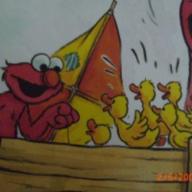New Senior Secondary Mathematics in Action Complusory Part
5B chapter 10
1. In a bag, there are some red, green and orange jelly beans in the ratio 1:1:2.
If 2 jelly beans are chosen one by one at random with replacement, find the
probabilities that
(a) 2 orange jelly beans are chosen (ans: 1/4)
(b) at least one orange jelly bean id chosen (ans:3/4)
2. The figure shows a regular uniform tetrahedron with numbers 1, 2. 3 and 4
marked near its vertices. When the tetrahedron is thrown, the number near the
top of the tetrahedron is the number obtained in throw.
If the tetrachedron is thrown twice, find the probabilities that
(a)the sum of the numbers obtained is greater that (ans: 3/8)
(b)the sum of the numbers obtained is even (ans:1/2)
(c)the product of the numbers obtained is even (ans: 3/4)
3. The dartboard in the figure is made up of 3 similar triangles, where
AC: DF: GI = 7: 5: 4. If Anton throws a dart at random and hits the dartboard,
find the probability that he hits the green region. (ans: 9/49)
4. A four- digit integer is formed by arranging the digit 3,4,5 and 6 randomly, If
each digit can be used once only, find the probabilities that the four-digit integer
(a) ends with a '4', (ans:1/4)
(b) is an even number, (ans: 1/2)
(c) is a prime number. (ans: 1/2)
5. The music club of a secondary school gave away 100 tickets of their annual
performance to 100 students at random inthe first break. They gave away another
100 tickets to 100 students at random in the secomd break. If 8 of these 100
students had been given a ticket in the first break, estimate the total number of
students in the school. (ans:1250)
6. Five balls numbered from 1 to 5 are put into a box. John takes three balls at
random from the box first and Ken takes the remaning two balls. Find the
probability that the sum of the numbers of John's balls is greater than that of
Ken's. (ans: 4/5)
F.5 math's Q (Probability)
2013-02-24 5:35 am
回答 (1)
2013-02-24 7:59 pm
✔ 最佳答案
1(a) P(2 orange jelly beans are chosen)= 2/4 * 2/4= 1/4(b) P(No orange jelly bean is chosen)= 2/4 * 2/4= 1/4So, P(at least one orange jelly bean is chosen)= 3/42(b) Total combinations = 16Suitable combinations (1,1), (1,3), (2,2), (2,4), (3,1), (3,3), (4,2), (4,4)So, P(sum of the numbers obtained is even) = 1/2(c) Suitable combinations: (1,2), (1,4), (2,1), (2,2), (2,3), (2,4)(3,2), (3,4), (4,1), (4,2), (4,3), (4,4)P(product of the numbers obtained is even ) = 3/43 P(he hits the green region)= (5^2 - 4^2)/7^2= 9/49(4) The probability that final digit chosen of each number should be equalSo, P(ends with a '4') = 1/4(b) As 4 and 6 are even numbers, P(is an even number) = 1/2(c) The answer should be 0 and the answer of textbook is wrong5 Let there are n students(100/n)(100/n) = 8/n10000 = 8nn = 12506 Total combinations = C(5,3) = 10John wins combiations (5,4,1),(5,4,2),(5,4,3),(4,3,2),(4,3,1)(3,2,4),(3,2,5),(2,1,5)P(the sum of the numbers of John's balls is greater than that ofKen's) = 8/10 = 4/5
收錄日期: 2021-04-13 19:19:55
原文連結 [永久失效]:
https://hk.answers.yahoo.com/question/index?qid=20130223000051KK00325

